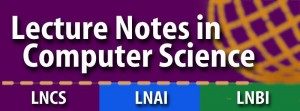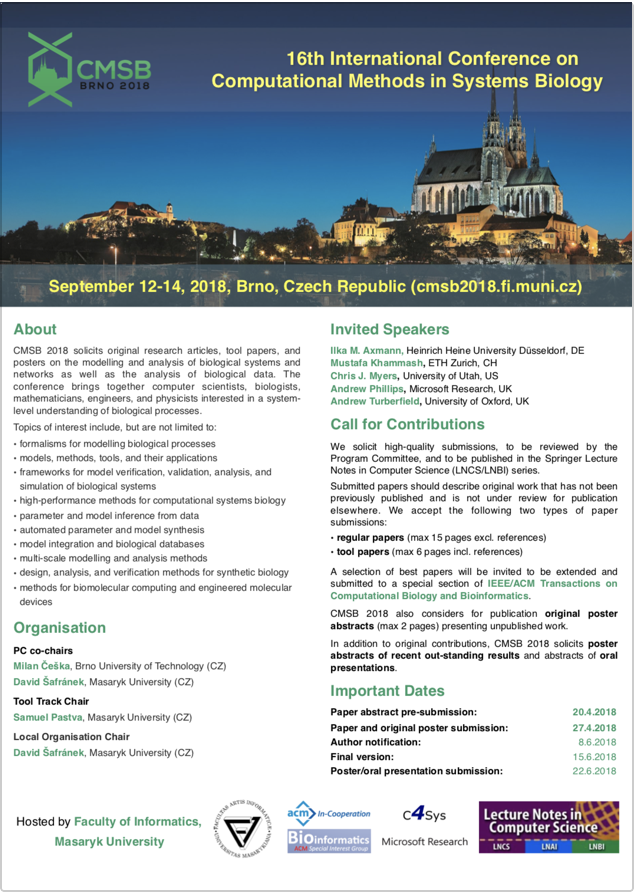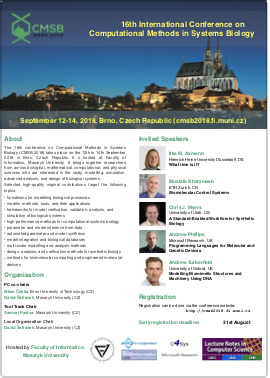Tool Artefact Submission
As a part of the tool paper evaluation, authors are also required to submit a tool artefact.
The tool artefact submissions must comply with the following guidelines:
- Authors submit a single web link which should either point to a tool website or an archive where all required information (see below) is provided.
- Please include the link in the Abstract submission field on EasyChair (it is not required to be included in the tool paper itself).
- Confidentiality and privacy: The submitted materials are considered confidential. If you do not want to make the materials accessible via a public link, you can submit a link to an encrypted archive and provide the password as a part of the confidential submission.
- The tool artefact at the provided web link must contain the following parts:
- The tool itself, represented in one of the following formats:
- an executable compiled for latest versions of major operating systems (Windows, macOS and Ubuntu Linux),
- a compilable source code (with clear build instructions),
- a preconfigured virtual machine (in the Open Virtualisation Format),
- a link to an online service or a website (Make sure the service/website is accessible worldwide. Alternatively, provide an instance of the service that can be run locally, possibly with limited functionality (in that case, please clearly state the limitations)).
- A plain-text file containing minimal requirements, list of dependencies (if any) and installation instructions (if any).
- Please state some minimal expected hardware configuration and supported operating systems. This does not apply to online services/websites, in that case, please include the list of supported browsers.
- Tool documentation.
- The exact contents and structure are not given, but it should reflect the use cases of the tool (e.g., input/output formats for command line tools, public API description for libraries, etc.). The documentation can be also part of the tool itself (help page, hints or tutorials, etc.).
- The documentation definitely does not have to be self-contained.
- A plain-text file with notes for the reviewer.
- Quick tutorial or introduction for users with minimal expertise.
- A simple example of usage with a step-by-step guide on how to work with the example, including the expected outcome of these steps.
- Any notes, remarks or disclaimers the reviewers might find useful.
- The tool itself, represented in one of the following formats:
If you have any questions or your tool does not comply with these guidelines, please do not hesitate to contact the PC co-chairs before submission.





